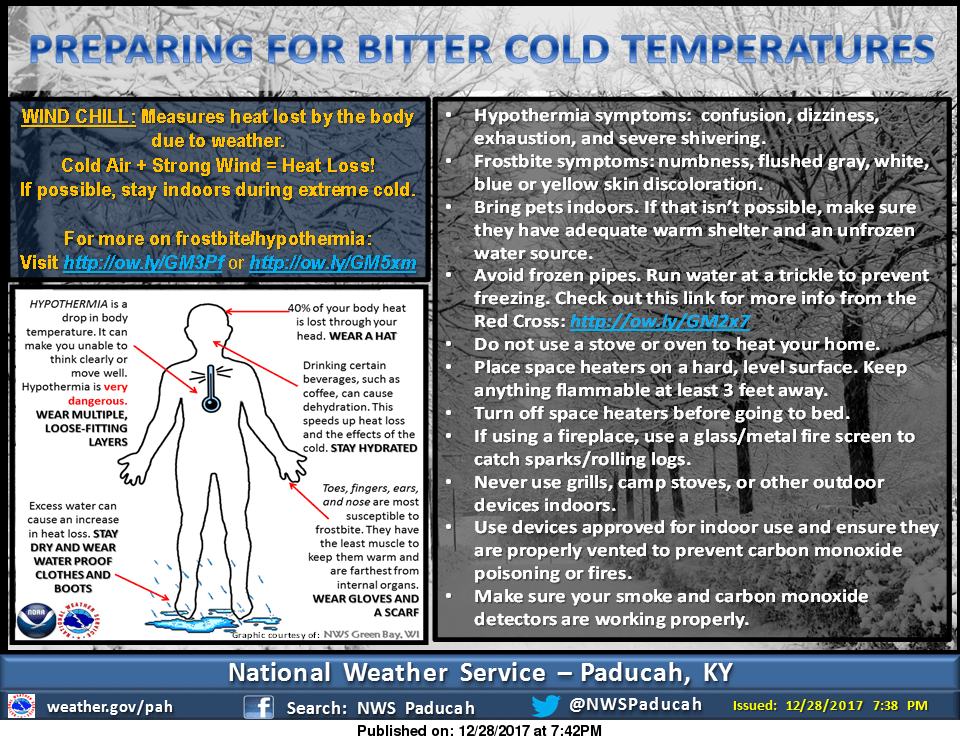
Temperatures this weekend through Tuesday are expected to make this New Year’s dangerously cold.
According to the National Weather Service in Paducah, arctic high pressure will move into the region slowly Sunday, bringing with it the potential for wind chills up to 25 below. Wind chill values from 0 to 15 below will be common throughout the weekend in the region, and coldest wind temperatures expected early New Year’s Day morning. Wind chill temperatures will generally linger in the single digits to just below 0 during the day.
Residents should plan to reduce time outdoors, particularly Sunday through Tuesday, according to NWS. Conditions will increase the potential for hypothermia (a dangerous drop in body temperature) and frost bite.
Hypothermia symptoms include confusion, dizziness, exhaustion and severe shivering. Residents should stay hydrated to prevent heat loss, remain dry and wear multiple, loose-fitting layers of clothing. NWS says 40 percent of body heat is lost through the head and recommends wearing a warm hat.
Frostbite symptoms are characterized by numbness, flushed gray, white, blue or yellow skin discoloration, according to NWS. Fingers, toes, nose and ears are most susceptible to frostbite due to lack of muscle and distance from the heart. Residents should wear scarf and gloves to protect extremities.
Infrastructure could suffer as a result of the cold, as well. NWS cautions residents to insulate any exposed pipes, as they are likely to freeze. Residents can run their water at a trickle to keep the flow and prevent freezing.
In addition, residents should make arrangements to check on elderly neighbors and family members, as well as those without adequate heat, according to NWS. Provisions should be made for outdoor pets, as well.
Residents should also exercise caution in their heating sources, NWS says, to prevent potential fire hazards. Those seeking additional warmth should not use an oven or stove to generate heat. Space heaters should be placed on a hard, level surface and be kept at least 3 feet away from any flammable material. Residents should never use grills, camp stove or other outdoor devices inside the home to provide extra heat; only indoor use items should be used inside the home, and those should be properly ventilated to prevent carbon monoxide poisoning. Those using gas stoves or fireplaces should be certain to use a fire screen to catch rolling logs or sparks.
Residents should also ensure smoke and carbon monoxide detectors are operating properly.

